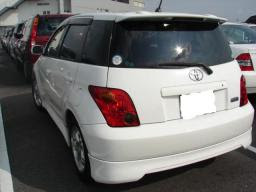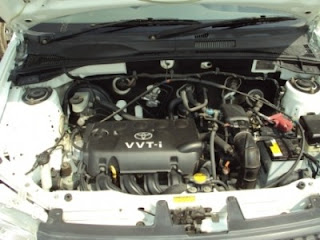A famous quote states that "Art is uncompromising and life is full of compromises." The Toyota Caldina is definitely a piece of art with no compromise. It was first manufactured for the mass market in 1992. The Toyota Motor corporation intended it to be a replacement of the Toyota Carina Surf. It has always been a wagon even with the continuous changes that have taken place on the model.

The first generation vehicle was a 5-door with rear suspension that was independent strut oriented. The commercial wagon had semi-independent leaf springs and this made it ideal for heavy load carriage. The first generation was manufactured up to 1997.
The second generation Caldina was manufactured from 1998 to 2002. This car was in the same class as the premio and the carina. It weighs 1470kgs.

The second generation Caldina has an optional stability control (VSC). In addition to the electronic control, there car matches the acceleration speed of the Subaru WRX and it can move from 0-100km/h within 7 seconds.
In 2000, this 2nd generation Caldina got spice up with a new bumper and longer headlamps.
In 2002, the Caldina ZT was released. Inspired by greater speed, aerodynamic enhancement and a sleek shape, this model has taken the market by storm. There are nine modifications of this car. All of them are wagons that are gasoline propelled.
The following is a breakdown of the modifications:
GT Editions
- GT-Four N Edition - 3S-GTE Engine, 2000cc - Turbo Charged.
- GT-Four - 3S-GTE Engine, 2000cc
- GT-Four C Edition - 3S-GTE Engine, 2000cc




Specs of the 3S-GTE Engine:
1.998 liter I-4 Turbo/Intercooled (3S-GTE)
Power: 191kW / 6200rpms
(256hp / 6200rps)
Torque: 324Nm / 4400rpms
(239 ft-lbs / 4400rps)
Economy: 10.6 km/liter (24.9 m/g)


ZT Editions
- ZT (4WD) - 1AZ-FSE (D-4) Engine, 2000cc
- ZT (Front WD) - 1AZ-FSE (D-4) Engin, 2000cc




Z Editions
- Z (4WD) - 1AZ-FSE (D-4) Engine, 2000cc
- Z (Front WD) - 1AZ-FSE (D-4) Engine, 2000 cc
- Z (Front WD) - 1ZZ-FE, 1800cc
| Engine: 1AZ-FSE | |||||
| Fuel Cycle | 4GR | Power Output (kw(ps)/rpm) | 110(150)/6000 | ||
| Cylinder | L4 | Torque (Nm(kgm)/rpm) | 198(20.2)/4000 | ||
| Valve | DOHC |
| 60 | ||
| Turbo | - | ||||
| Displacement | 1998 | ||||
| Bore Stroke (mm) | 86x86 | ||||
| Steering | RP | ||||



X Edition





































